Where was The White Lotus filmed?
Your Dream Villa Awaits
For fans of The White Lotus, the luxurious settings showcased in the...
Read more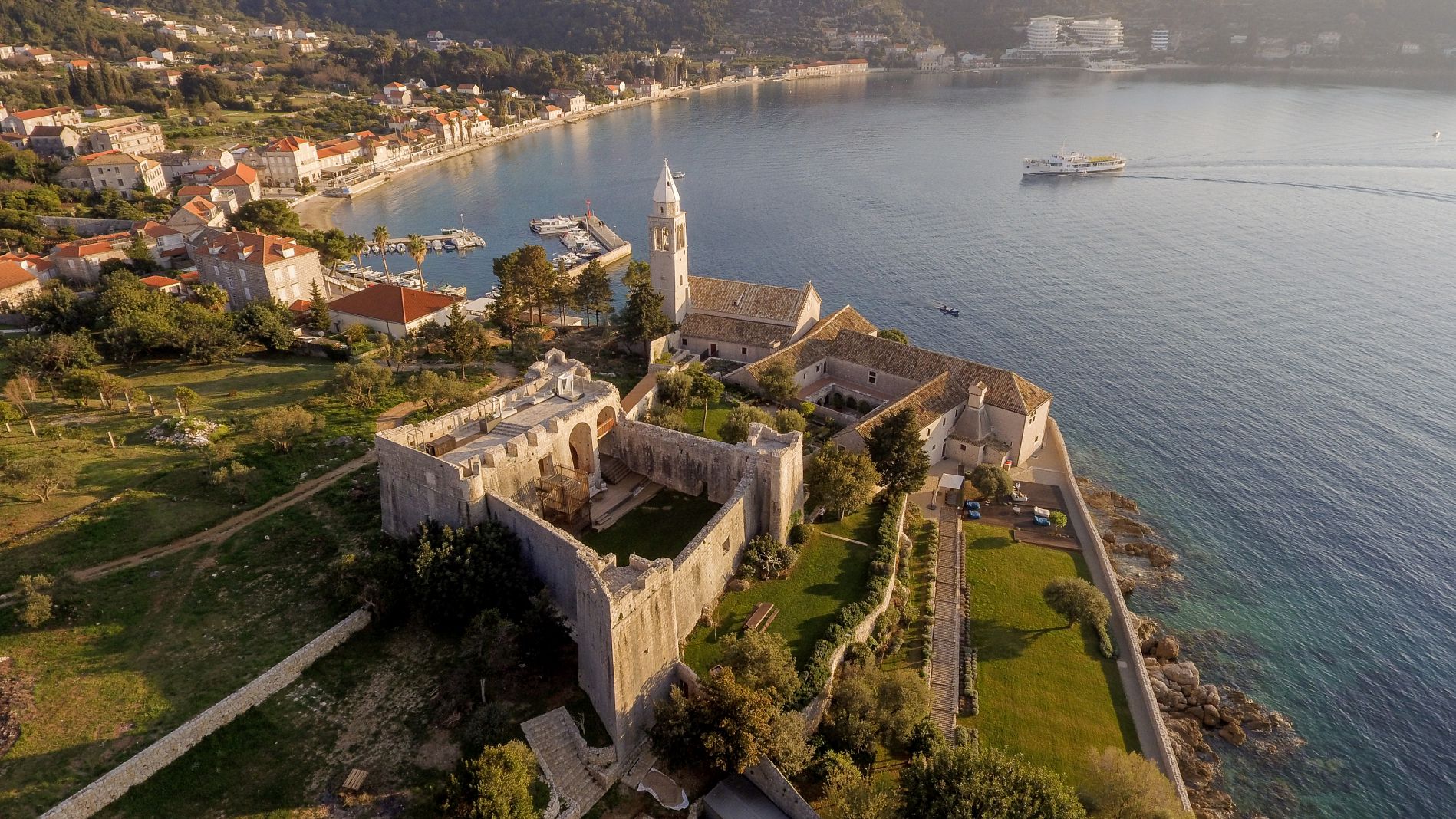
In 2006, an ambitious restoration project began under the guidance of Francesca Thyssen-Bornemisza, Creative Director of Lopud 1483, who approached the challenge with characteristic thoroughness.
The restoration team included architectural consultation from Frank Gehry, German engineering specialists who strengthened the building’s foundations, and bespoke furniture designed by Paola Lenti.
This collaborative effort transformed the neglected structure – gradually being reclaimed by wild vegetation – into an exclusive five-suite retreat that reopened to the public in 2018.
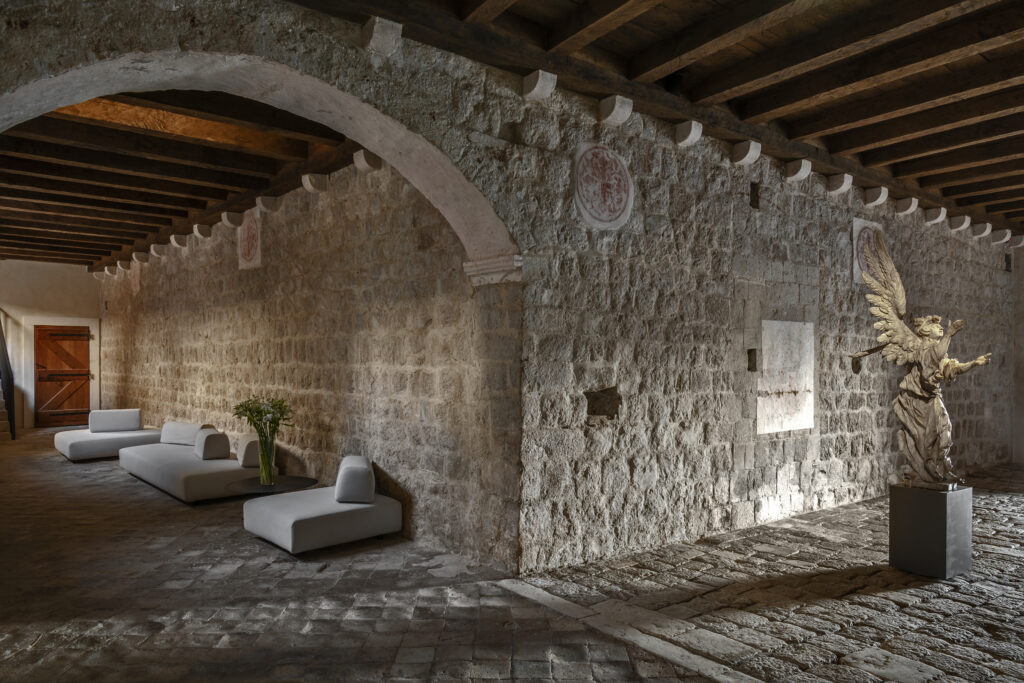
We’re Just a Call Away.
Founded in 1483, as confirmed by the date engraved on its façade, the Franciscan Monastery of Our Lady of the Cave (now Lopud 1483) served multiple crucial roles in its island community.
Beyond its primary religious function, it operated as a school, pharmacy, and defensive stronghold against the pirate raids and Ottoman threats that once plagued the Adriatic coast.
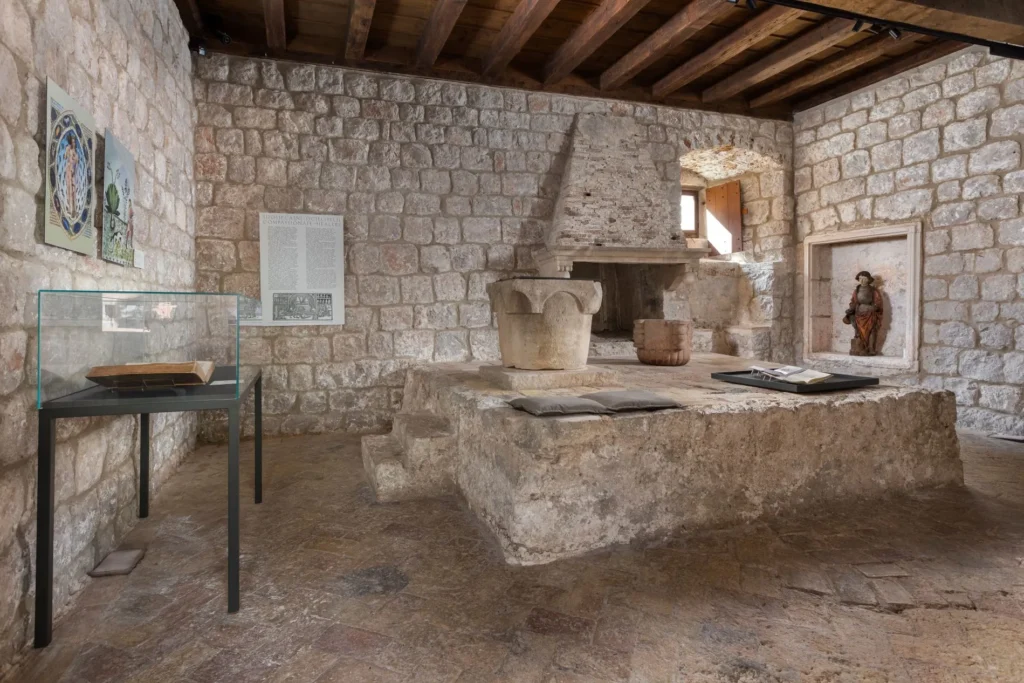
“Everyone who has ever worked on the restoration, in one capacity or another—to whom I am forever grateful—has been touched by this magical place. My biggest wish is that it be used by those who, like me, seek greater virtue, while honouring Saint Francis, patron saint of the natural world—all in the spirit of generosity, without which none of this would have been possible.”
— Francesca Thyssen-Bornemisza, Creative Director of Lopud 1483.
The architectural team from Zagreb’s Arhitektri studio faced a profound challenge: how to introduce contemporary elements into a 15th-century building while honouring its essential character.
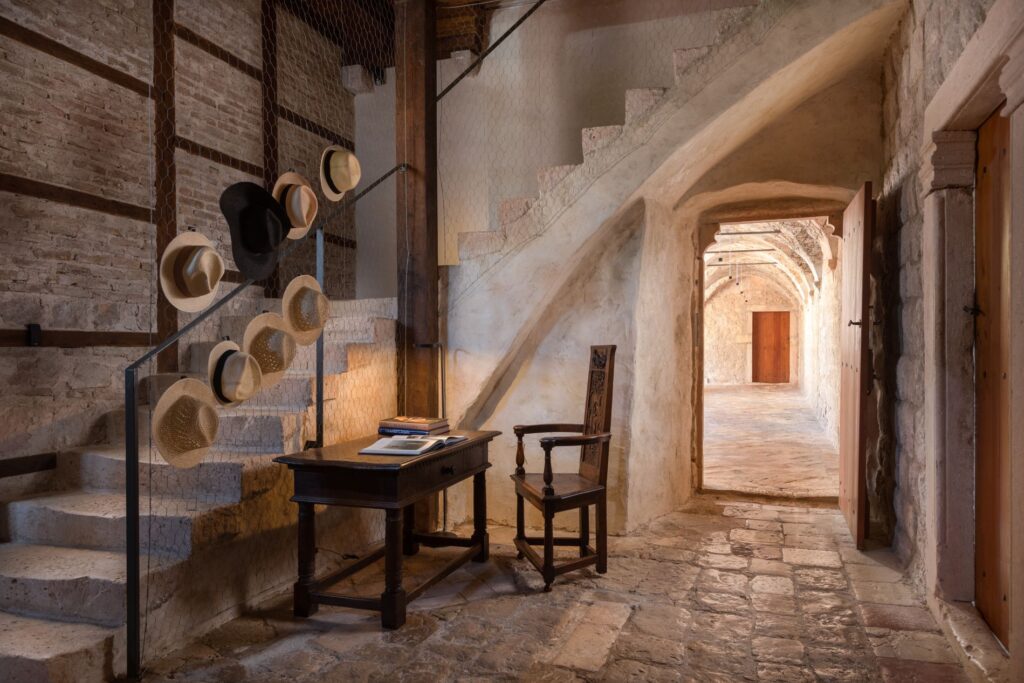
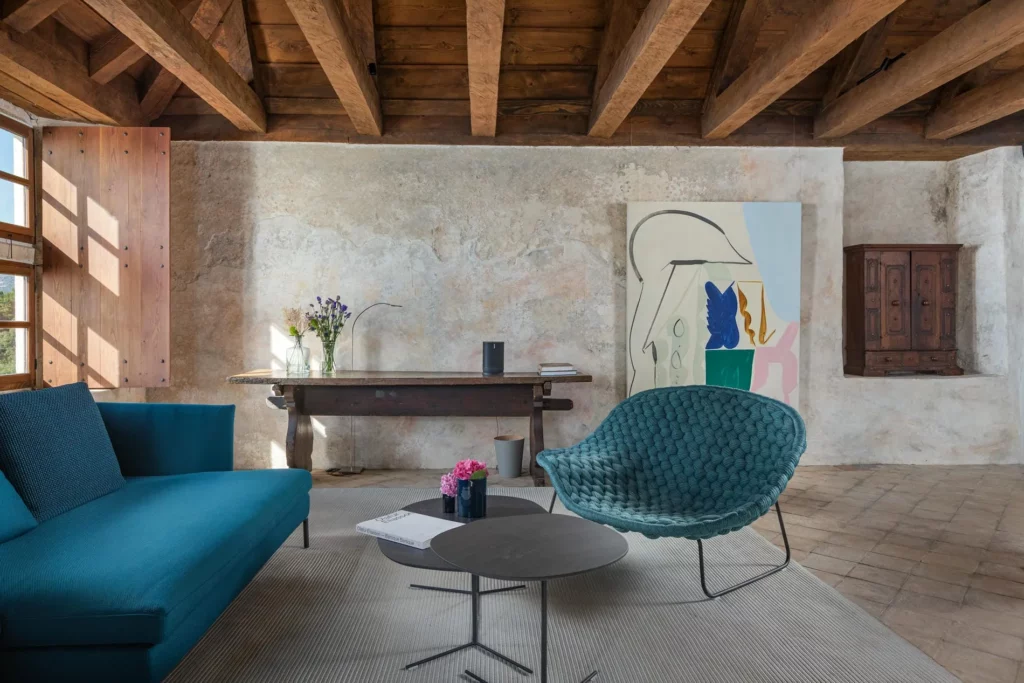
Their solution was to make modern additions in the most gentle, tranquil manner possible, expressing creativity through thoughtful details, spatial surprises, and atmospheric use of colour and light.
“The primary conservation rule says that if one finds evidence that something existed, one should follow the same principles and/or materials to rebuild it. If a room has no floor but in certain parts there are remains of the former floor covering, the entire floor should be rebuilt using the same materials and techniques.”
— Francesca Thyssen-Bornemisza, Creative Director of Lopud 1483.
The monastery now offers a masterful blend of historical elements and modern comforts. Contemporary Italian bathrooms sit near rooms displaying priceless family heirlooms, including 14th-century reliquaries and Flemish tapestries. Renaissance oil paintings hang alongside 21st-century velvet sofas, while tables display modern art, curated books, and exotic flower arrangements.
In the main bedroom, graffiti reading “IL DUCE” – left by occupying Italian soldiers during the Second World War – sits alongside crosses carved by monks.
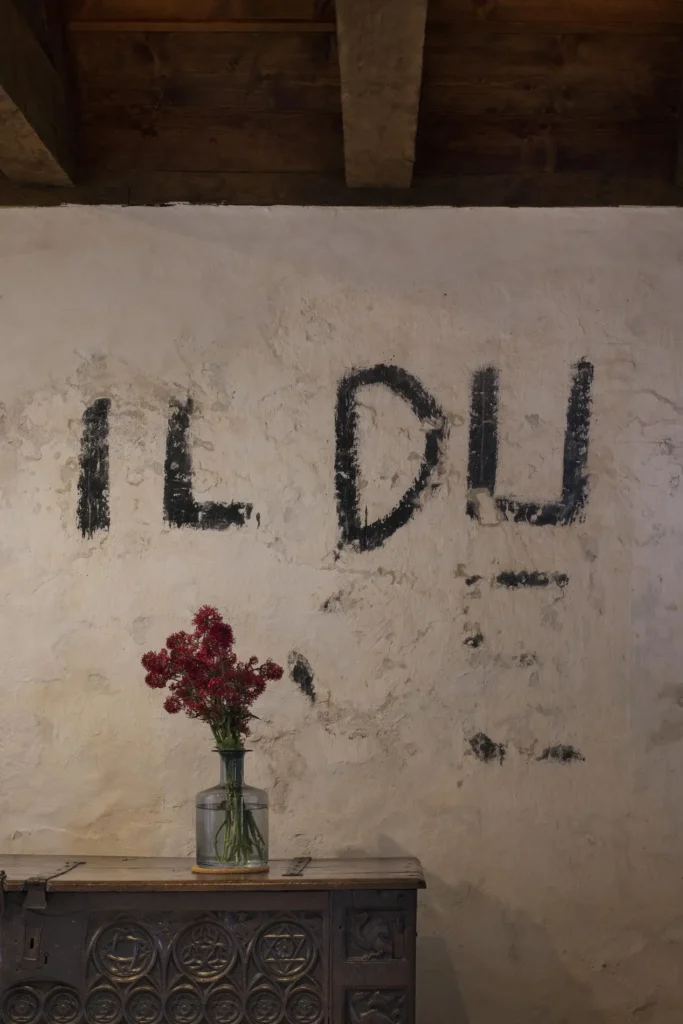
“I kept it because history matters.”
— Francesca Thyssen-Bornemisza, Creative Director of Lopud 1483.
Every new intervention was designed to showcase care and innovative thinking without overshadowing the historical structure. The furniture design, in collaboration with Paola Lenti, follows this same philosophy – simple shapes engineered with meticulous attention to detail create inviting elements that enhance the monastery’s serene ambience.
Within these ancient walls, visitors can explore the private art collection of the Thyssen-Bornemisza family, a remarkable legacy spanning three generations of collectors.
The collection began with August Thyssen, who commissioned marble sculptures from Auguste Rodin, but it was his son Heinrich who established the family’s reputation as serious art collectors with his passion for Renaissance art.
Throughout the monastery, visitors encounter Heinrich’s remarkable acquisitions, including a 14th-century reliquary bust, a late 15th-century limewood sculpture of the Archangel Michael, and German Renaissance portraiture, including a striking 1527 portrait of Anna Dürer, stepdaughter of Albrecht Dürer’s brother.
The old refectory houses perhaps the most spectacular painting: Mattia Preti’s “The Liberation of Saint Peter”, which showcases dramatic nocturnal lighting reminiscent of Caravaggio. Another notable work is Francesco Furini’s “Saint Sebastian Holding an Arrow” from the late 1620s, its sensuously rendered saint embodying the complex religious aesthetics of the Counter-Reformation.
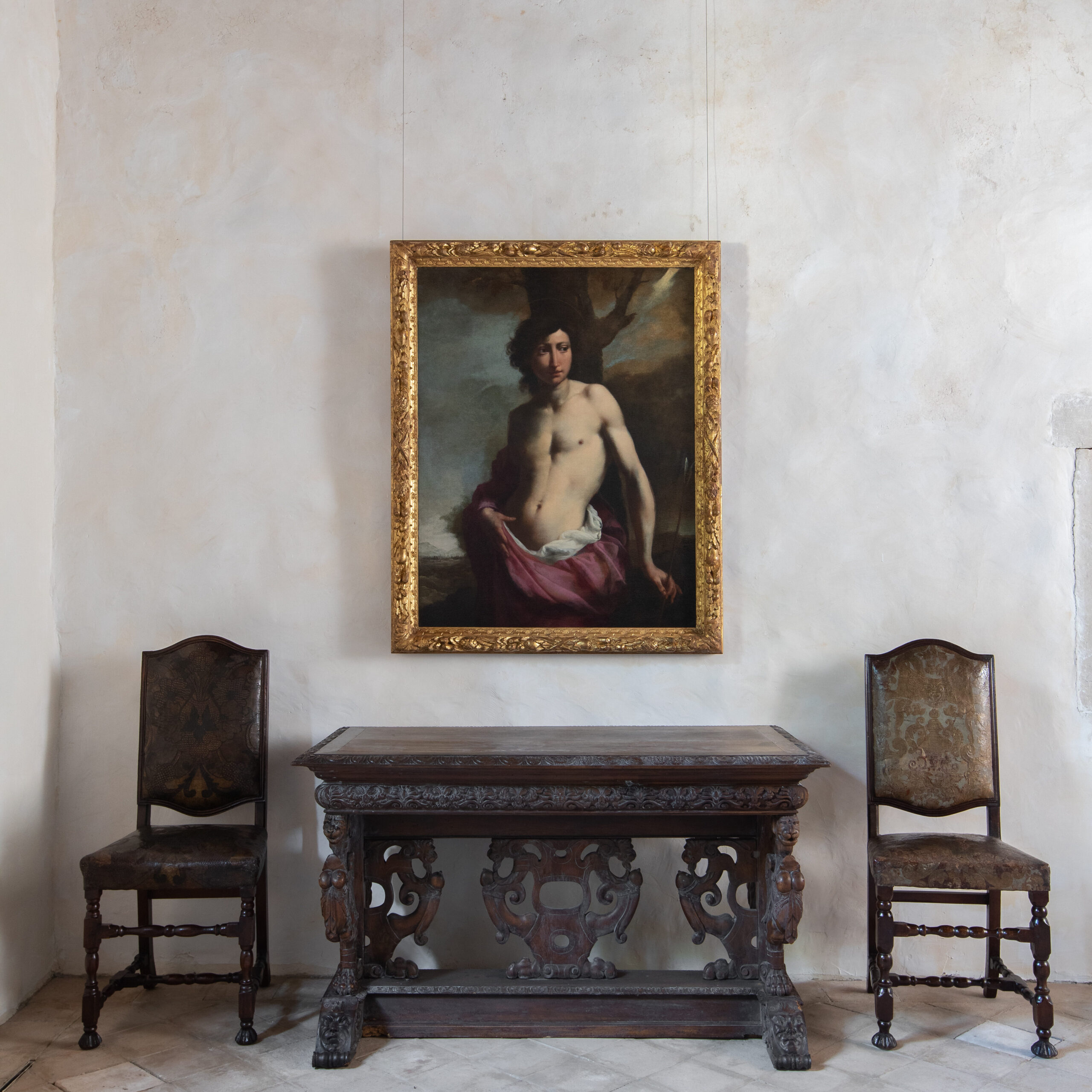
Hans Heinrich’s collection extends beyond paintings to the decorative arts: a magnificent 16th-century French tapestry, silver-gilt goblets, elaborate tankards, ornamental vessels fashioned from nautilus shells and coconuts, and Renaissance furniture throughout the monastery.
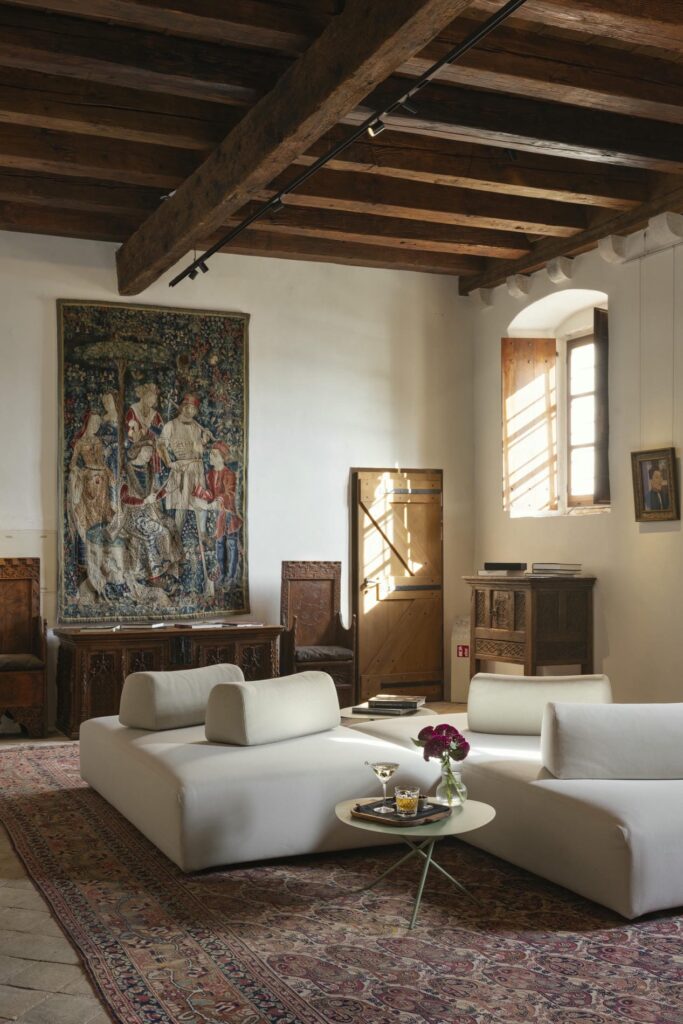
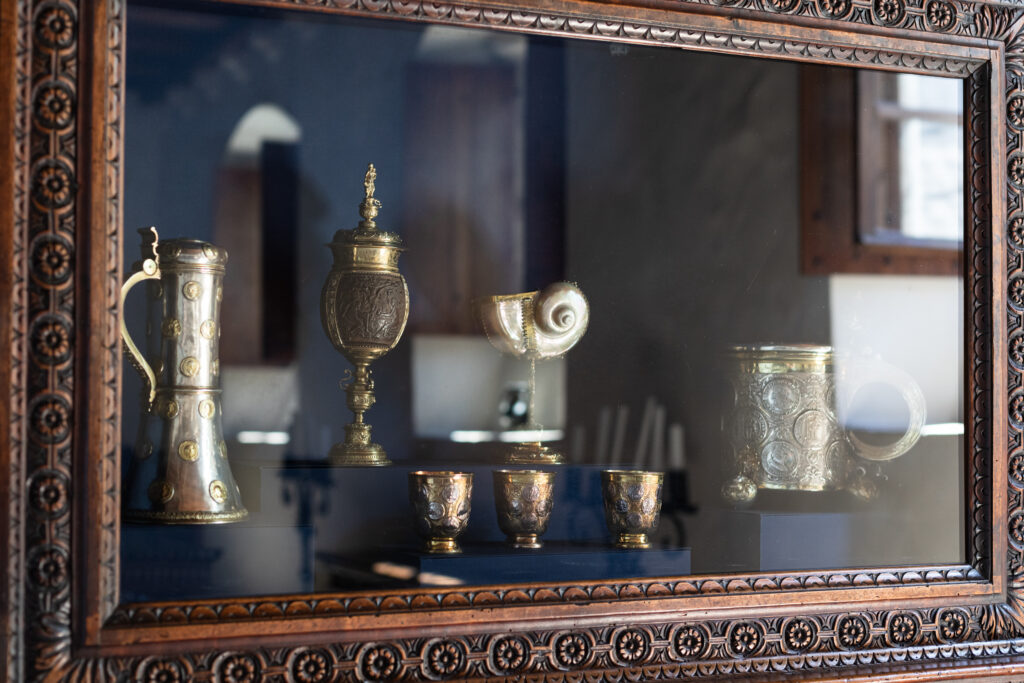
Francesca Thyssen-Bornemisza, Heinrich’s granddaughter and founder of Thyssen-Bornemisza Art Contemporary (TBA21), has added contemporary works by artists including Rineke Dijkstra, Thomas Struth, Xiomara De Oliver, Patricia Leite, Billy Childish, and Aranda Lasch, creating thoughtful juxtapositions with the historical pieces.
Perhaps the most distinctive feature of Lopud 1483 is its contemplative gardens, which honour the Franciscan tradition of pharmaceutical knowledge that dates back centuries.
Since the 6th century, monastic orders throughout Europe preserved the pharmaceutical wisdom of Greco-Roman civilisation, with the Franciscans establishing themselves as integral to Croatia’s medical landscape.
In Dubrovnik, the Franciscans established a monastery pharmacy in 1317 that would operate continuously until 1947, becoming Europe’s oldest functioning pharmacy.
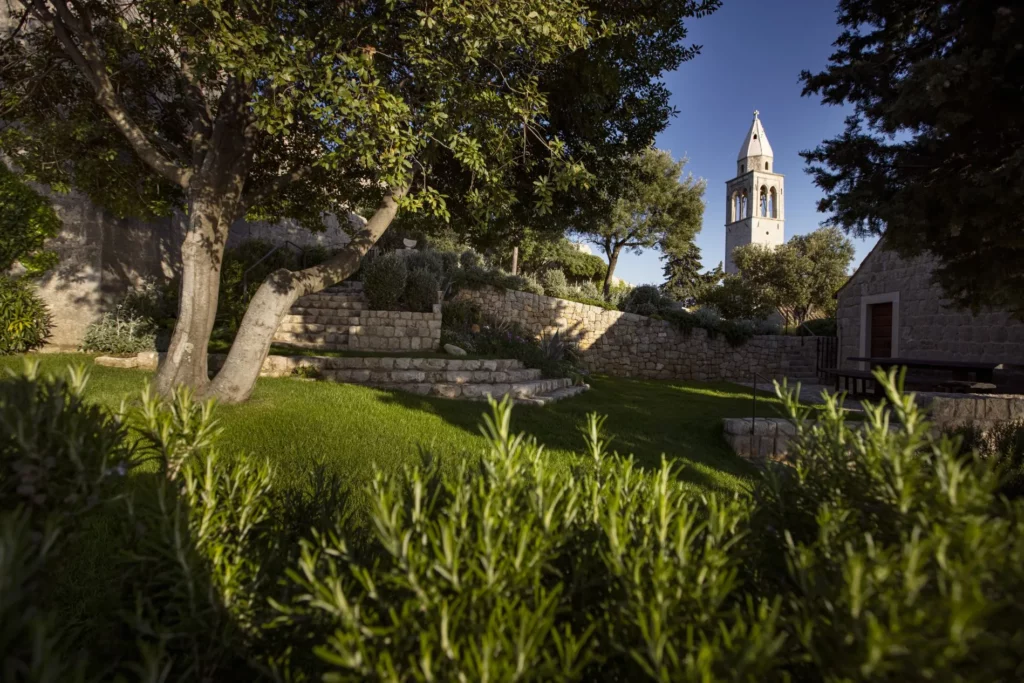
Most Franciscan monasteries maintained infirmaries or dispensaries serving both their brothers and surrounding communities, with monastic gardens cultivating medicinal herbs for treatment.
This healing tradition is now celebrated in Lopud’s contemplative garden stations:
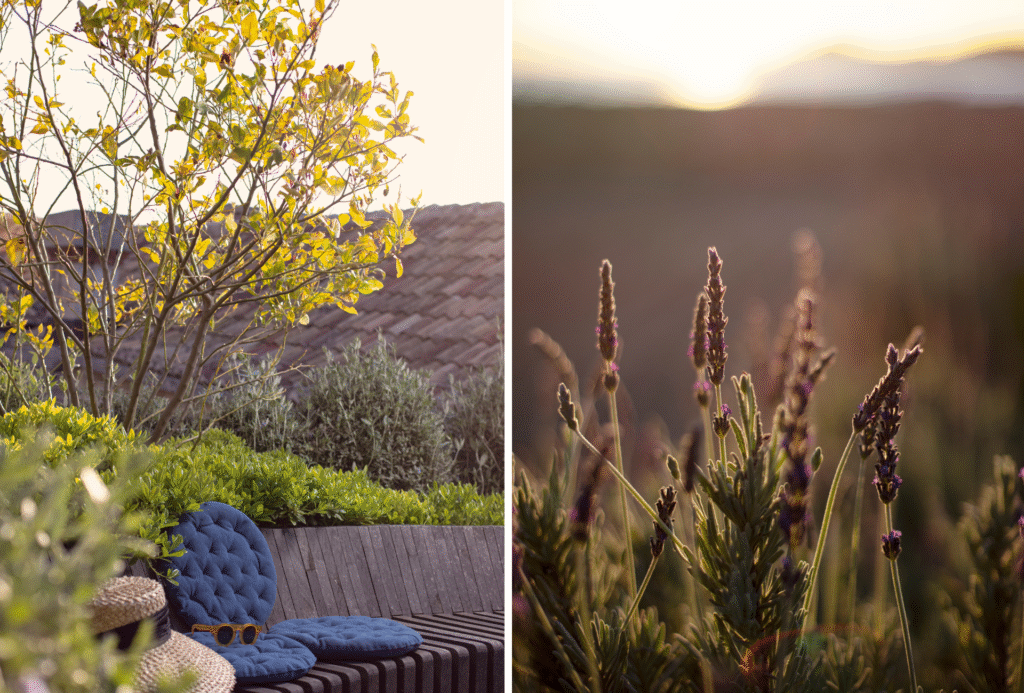
These garden stations connect visitors to the monastery’s medicinal heritage, including the famous “Elixir of Long Life,” a restorative tonic that combined exotic ingredients through an elaborate 18-day preparation process.
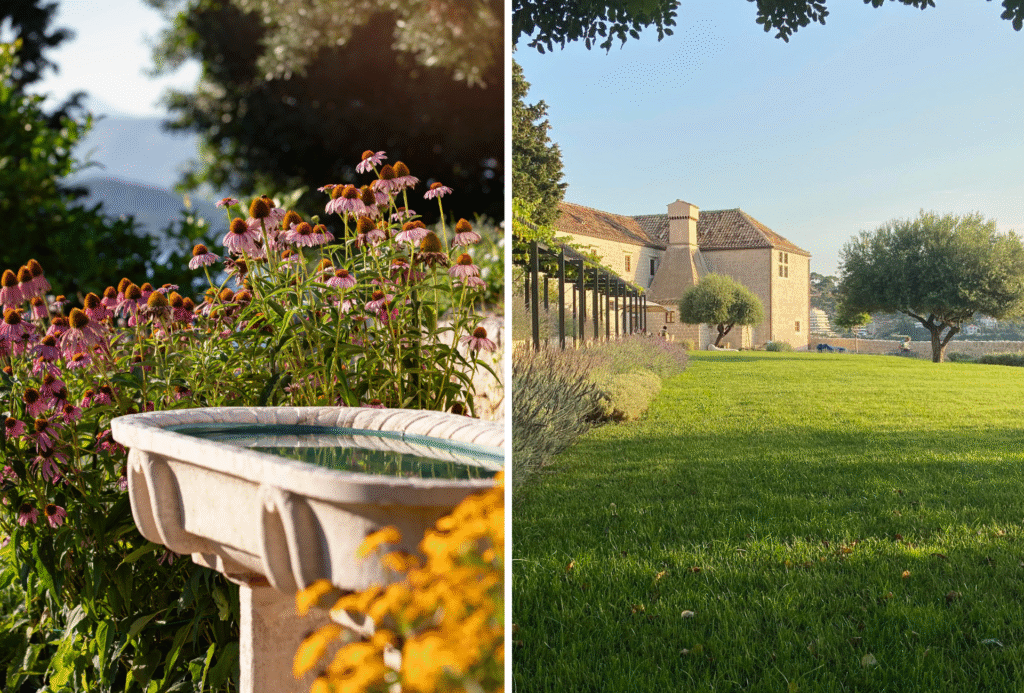
This sophisticated elixir, which included ingredients like socotrine aloe, fine saffron, white turmeric, and gentian root, demonstrated the Franciscans’ global trade connections and botanical knowledge.
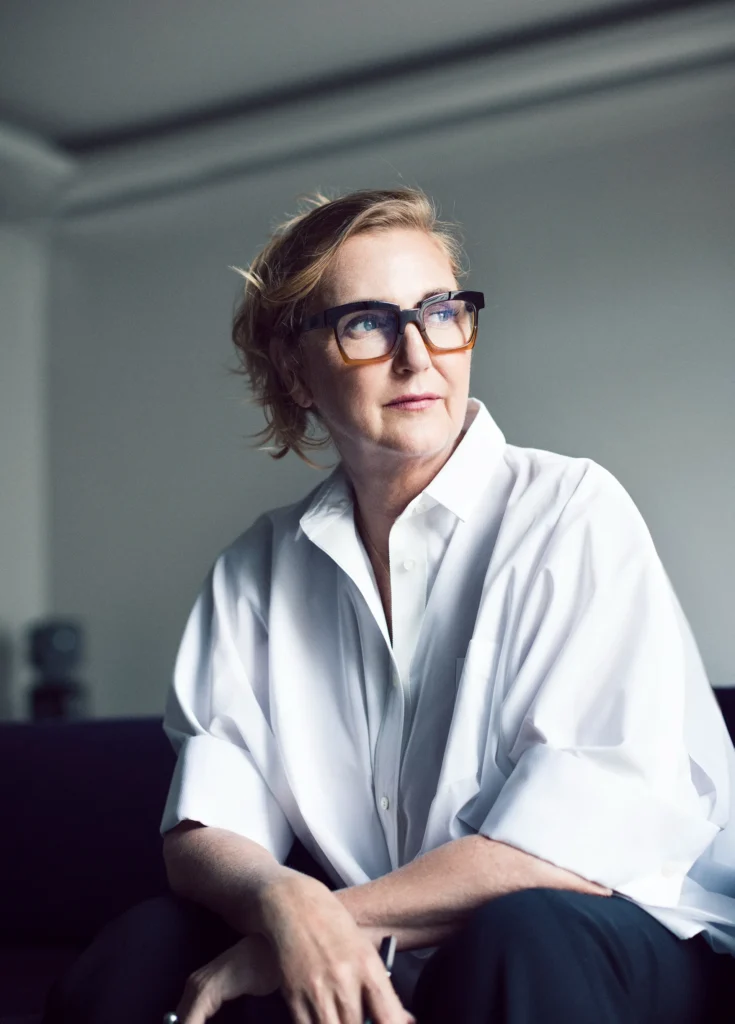
The greatest challenge wasn’t just time or complexity – it was the fight to protect the soul of the building. The original engineering proposal, approved by the local Conservation Institute, called for the destruction of the monastery’s ancient cloister to make way for a concrete structure intended to shield the monument from potential earthquake damage.
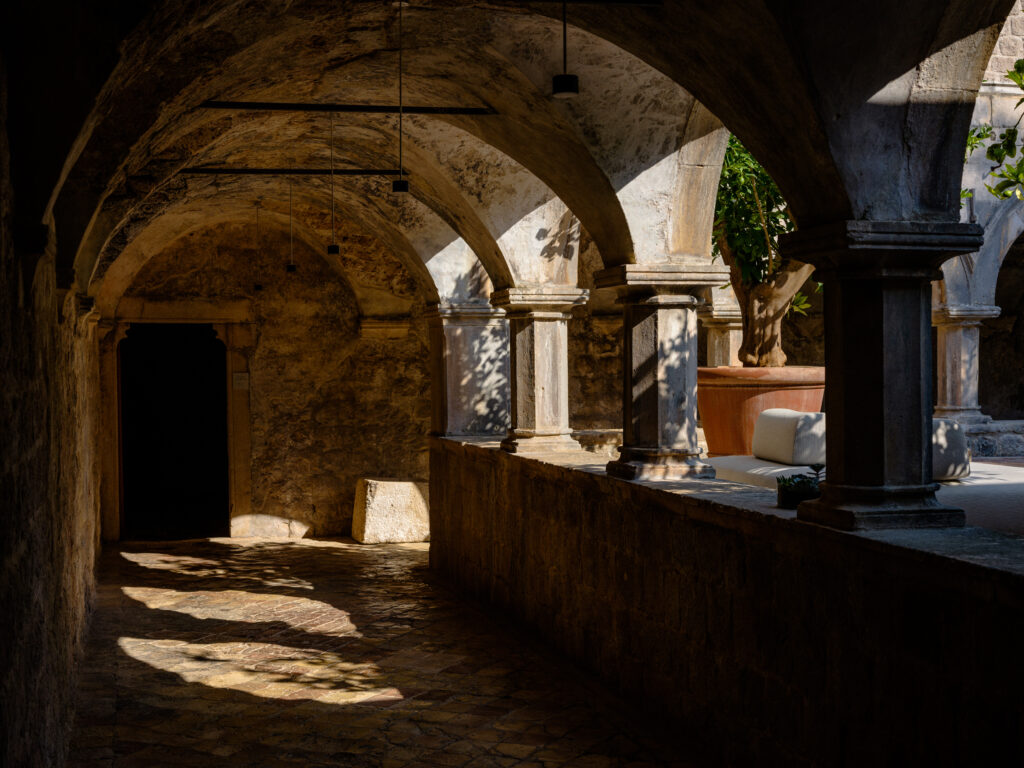
“I think the best compliment we received was that the new features feel like they have been here forever! It was our intention to make the new architecture complement the old and to be noninvasive.”
— Francesca Thyssen-Bornemisza, Creative Director of Lopud 1483.
I resisted this plan with everything I had. For two long years, I challenged it—determined not to let the heart of Lopud 1483 be erased in the name of protection.
Ultimately, I found a visionary partner in Professor Fritz Wenzel, a brilliant structural engineer whose body of work includes the reinforcement of the Hagia Sophia in Istanbul, a UNESCO World Heritage Site. Through his ingenuity, we implemented an invisible seismic solution that preserved the original cloister in its entirety. This intervention – subtle, silent, and profoundly effective – remains one of his greatest engineering achievements.
I stopped at nothing to maintain the integrity and authenticity of Lopud 1483. Today, the cloister remains untouched, and continues to serve as the spiritual and architectural heart of the monastery. Every step taken in the restoration was guided not only by conservation principles but also by deep emotional conviction. As Frank Gehry once advised me during a visit in 1995:
“Take your time restoring this magical place. Let the stones speak to you and the building inform you what it wants to become.”
— Frank Gehry
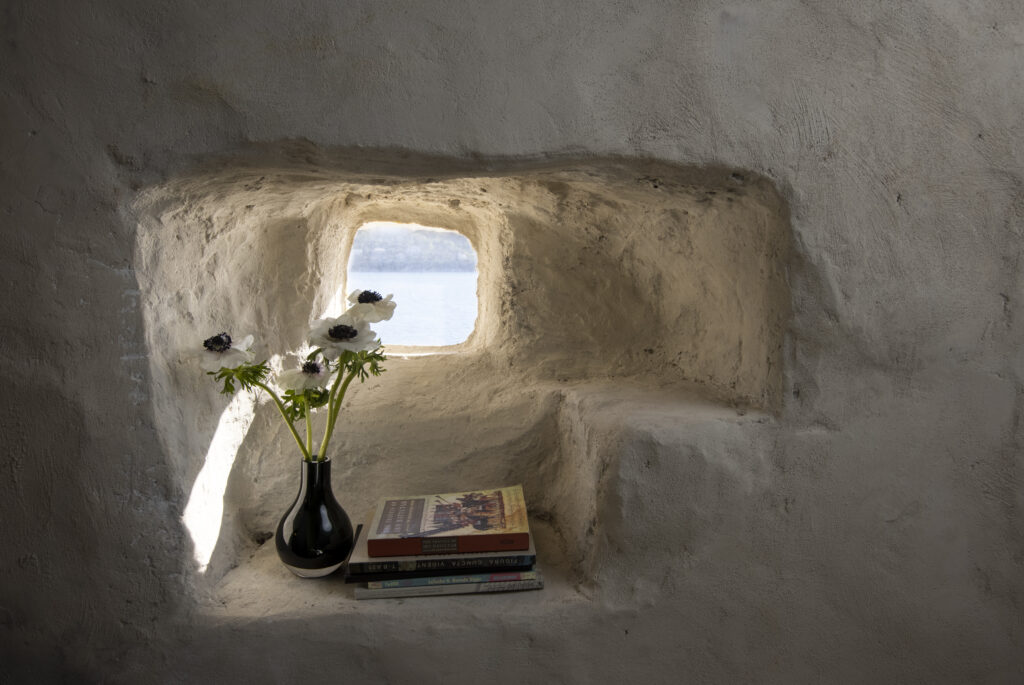
One unexpected recommendation was to retain the monastery’s original graffiti. Initially, there was debate about whether to preserve these markings, but we recognised their historical significance and chose to keep them as authentic traces of the monastery’s past.
Reflecting on the restoration, I wouldn’t change the duration. The extended timeline allowed for meticulous attention to detail and ensured that we honoured the monastery’s history at every step. It was a labour of love that required patience and dedication.
Absolutely. We’ve wholeheartedly embraced the idea. Our beautifully restored pharmacy – still home to original tools and vessels – pays homage to the monks’ deep knowledge of healing.
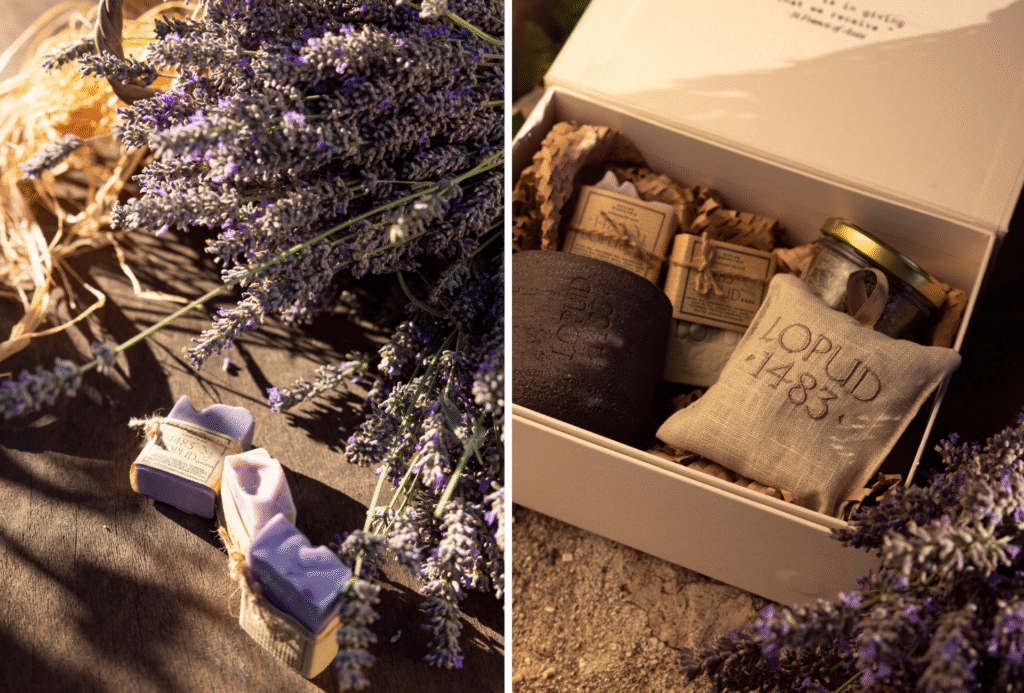
In keeping with that legacy, we’ve cultivated a medicinal garden featuring over 60 plants and herbs, many of which were traditionally used by the Franciscans. From this garden, we craft our own organic herbal infusions, offering guests not merely a wellness experience, but a multisensory journey into the monastery’s centuries-old tradition of care and contemplation.
Lopud Island’s car-free environment offers a rare sense of serenity. The absence of vehicles allows guests to fully immerse themselves in the natural beauty and tranquillity of the surroundings, fostering a deep sense of relaxation and connection with nature.
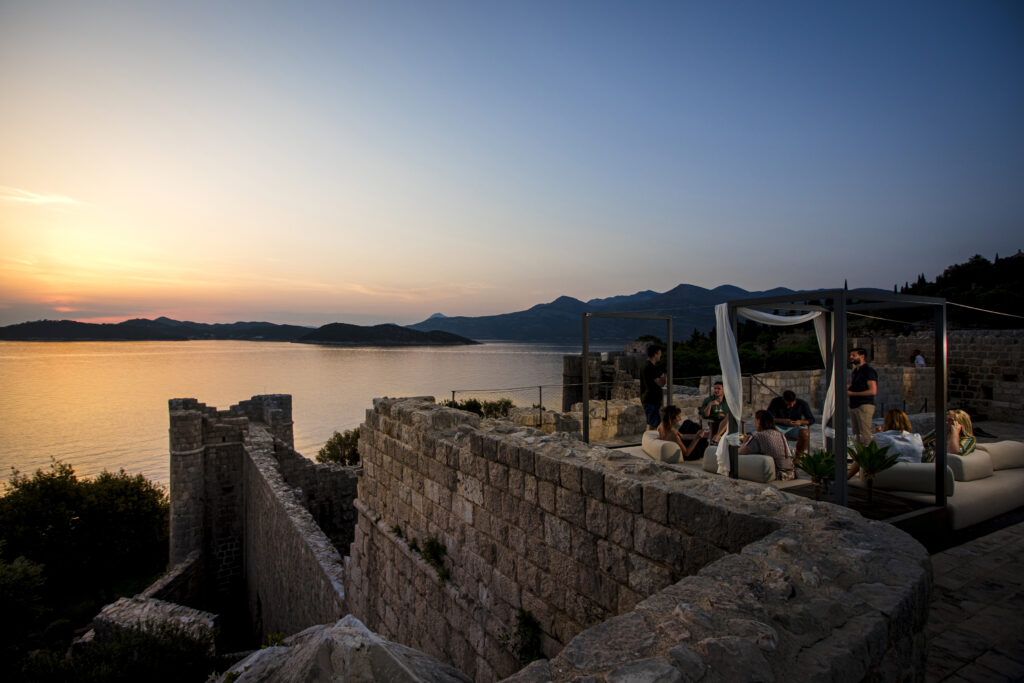
Yes – without question, the Sacred Garden. Designed by Åsa Andersson, a remarkable Swedish shaman and healer, the garden is more than just a space – it’s a living, breathing mandala of peace and transformation.
Guided by sacred geometry, its layout follows ancient harmonic principles that resonate with the body and soul. Each of the nine meditation stations corresponds to a specific energetic frequency, aligned with the chakras and the geometry of nature.
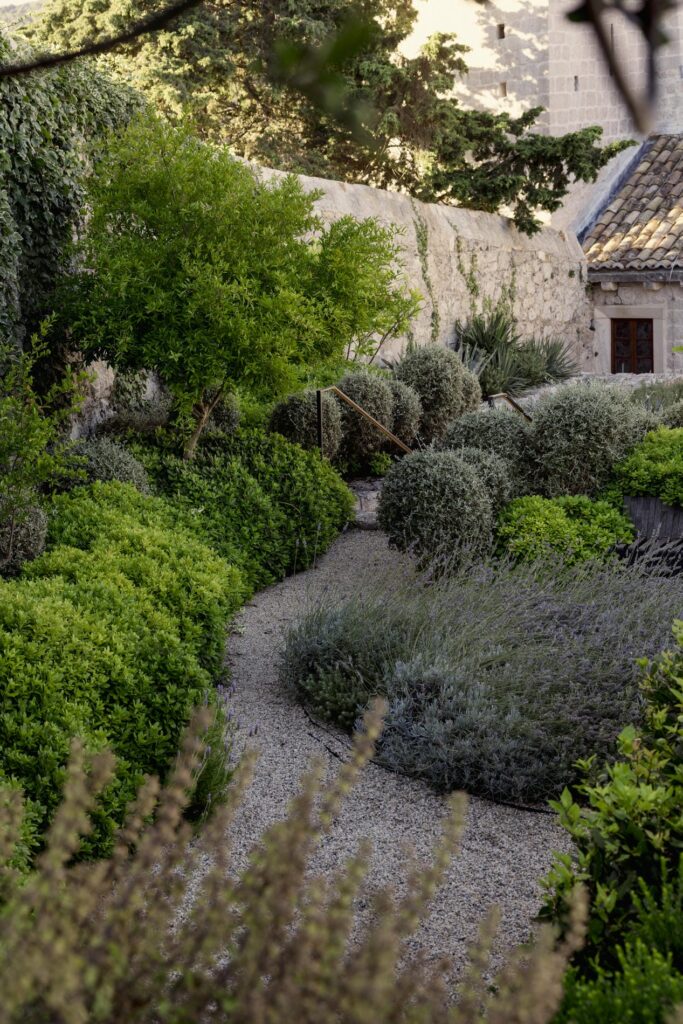
Åsa’s vision was to create a sanctuary where guests could experience profound stillness and reconnection – what she called “a return to inner listening.”
The garden draws on the monastery’s original purpose as a place of quiet contemplation, transforming that heritage into a contemporary pilgrimage for the spirit. Surrounded by medicinal herbs and the whisper of the sea breeze, it offers a sacred space to rest, reflect, and realign with something timeless.
A perfect day might begin with meditation in the Sacred Garden, followed by a leisurely breakfast overlooking the Adriatic. Guests may explore the island’s trails, visit the Your Black Horizon art pavilion, or enjoy a private cooking lesson. Evenings are best spent over intimate dinners in the cloister, accompanied by local wines and the gentle sound of the sea.
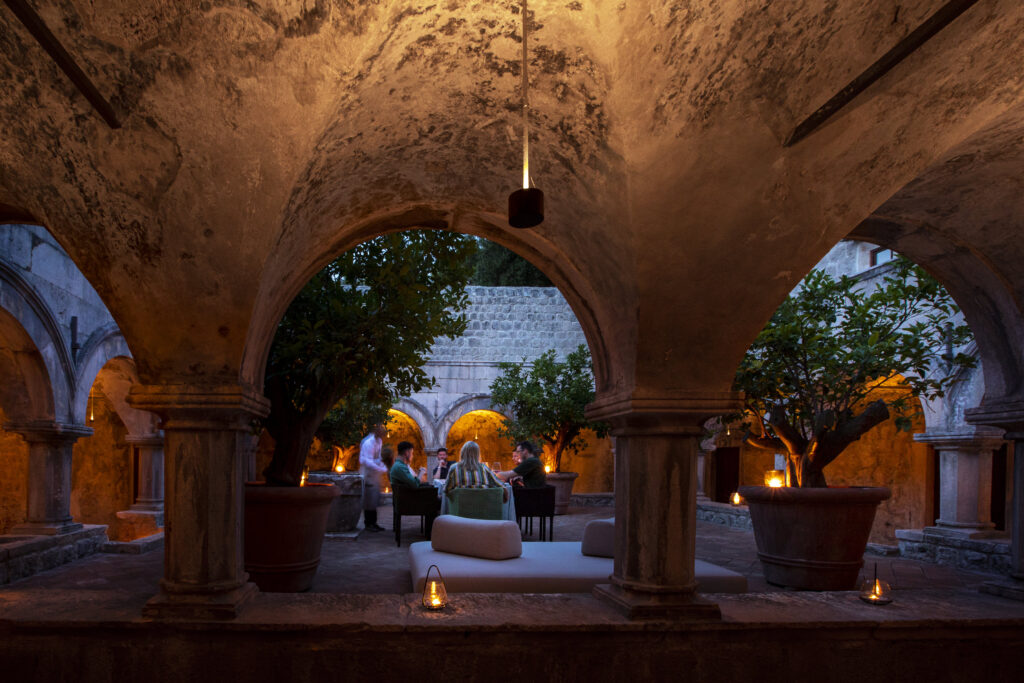
Hosting the Ponta Lopud Festival has certainly been a highlight. The monastery and fortress provide a truly unique setting for film screenings, artist gatherings, and cultural exchanges – fostering creativity and dialogue in an inspiring environment.
During the Ponta Lopud Festival, we also had the pleasure of hosting Joel Coen and Frances McDormand. Their visit brought a wonderful energy to the property – seeing them engage with the island’s artistic spirit and historical richness was deeply rewarding.
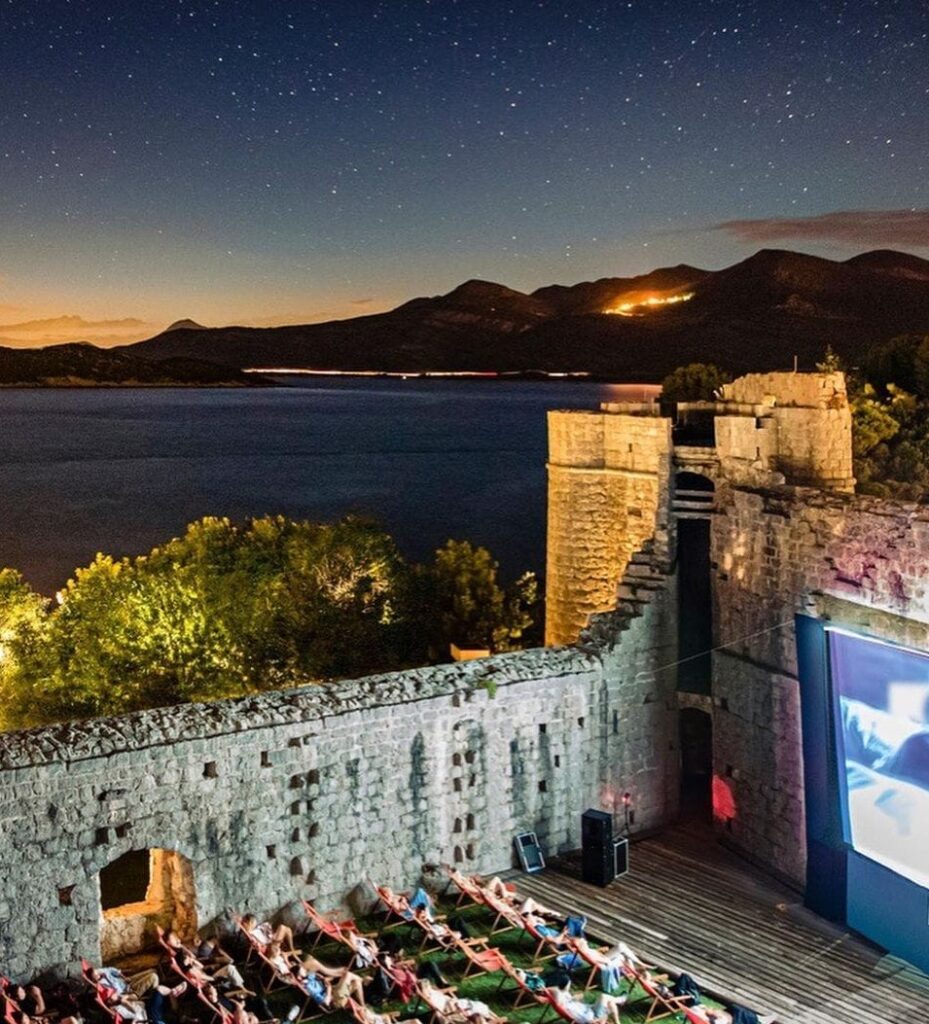
We’ve been fortunate to host some truly remarkable guests over the years. One particularly heart-warming experience has been welcoming David Beckham and his family. They returned three years in a row for their holidays, drawn to the sanctuary-like privacy of Lopud 1483 and its direct access to the sea via our private beach.
They were especially fond of Mali Andro, our charmingly restored traditional fishing boat, which became a favourite for peaceful excursions around the island.
One guest described their stay as a transformative experience, noting that the blend of history, art, and nature provided a profound sense of peace and inspiration. Feedback like this affirms our mission to create a sanctuary that truly nurtures the soul.
In an age of mass tourism, Lopud 1483 offers something increasingly rare – an authentic encounter with history that doesn’t sacrifice modern comfort, and a private retreat that nevertheless serves the cultural enrichment of all who visit.
Here, on this car-free island just 20 minutes by speedboat from Dubrovnik, a monastery has been reborn as a sanctuary for both body and spirit, continuing its centuries-old mission in a thoroughly contemporary way.
Let’s talk! Schedule a personalised video call with our team to discuss your questions.

Where was The White Lotus filmed?
For fans of The White Lotus, the luxurious settings showcased in the...
Read more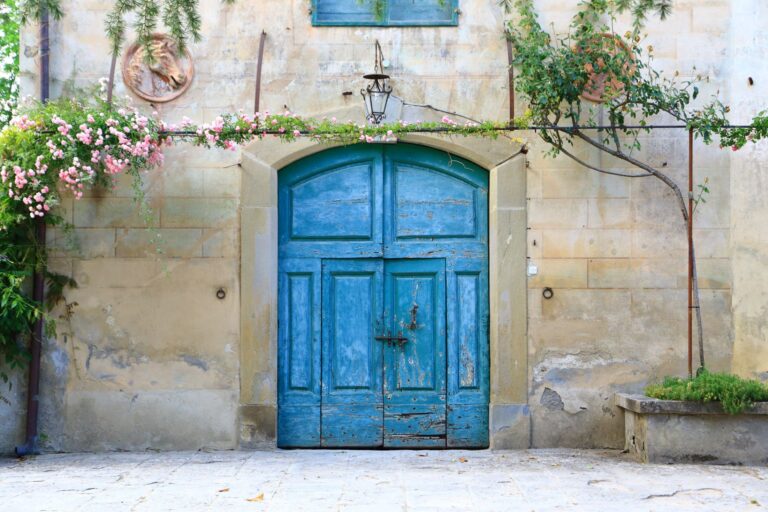
Castello del Monsignore
It’s a genuine privilege to experience the remarkable Castello del Monsignore, constructed...
Read more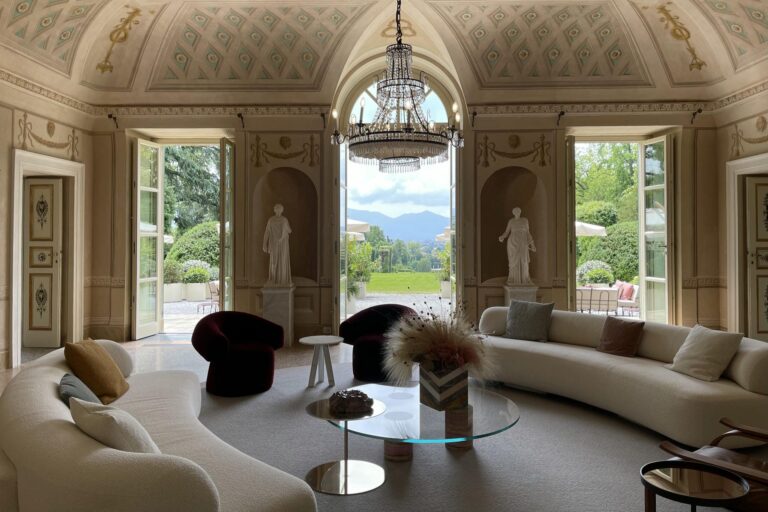
Fashion Meets History
What unites Dior’s creative director Maria Grazia Chiuri, the iconic socialite Anna...
Read more